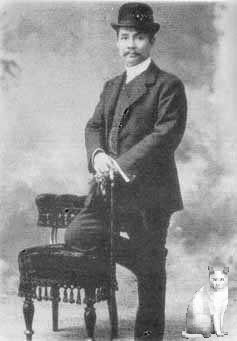Khao Manees and Royalty
King Chulalongkorn, Rama V, had 9 Khao Manees and loved them so much, he entrusted his son, Prince Chumporn Khetudomsak, to raise and breed them from 9 to 18. Later, Princess Roengchitchrang Apakorn, daughter of Prince Chumporn, inherited the work and the 18 cats became 40. During the 1880's Siam faced the threat of colonisation by Britain and France, and it was during these fraught times that King Rama V gave a pair of vichienmaat Siamese cats - better known as the seal point - to an English consul general in Bangkok. These Siamese Cats were described as "royal" probably to give them added cachet, and became an instant sensation; the British government agreed to let Siam retain its independence. What was not realized was that the wily king had given them a substitute, not a true Royal Cat! The fact that it was the Khao Manee that was the true Royal cat is described by Namdee Witta in an interview. Independent verification of his story is provided by the following quote from Siamese Cats, by Sydney W. France (Third Edition June, 1951. First published October 1948) which was uncovered by Daphne Negus. The comments are of Mr. A. N. M. Garry, of Minehead, Somerset, expressed in a letter to Mr. France: "My wife and I are ardent cat lovers,
and having spent most of my working life in Borneo, I feel I have some justification for
writing to you about Siam and its cats. When I was in Siam in 1930, I was told that
there were two distinct types of Siamese cats - apart from the Malay cat and crosses with
it. The first is the one we see in England, but I think its points are a shade
different, nigger brown instead of seal. The second, which was said to be peculiar
to the Royal family and palaces, had the body colour of the first - but not the points, and
hazel eyes. It was probably in order to show reverence to a departed monarch that when the young
King of Siam was crowned in 1926, a Wichienmaat was carried by the Court Chamberlains in
the procession to the Throne Room. Along with the sacred cat were borne a
grindstone, symbolizing firmness, a gherkin for happiness, and grain for
prosperity. |
